During the first lockdown, Harry Borden wanted to use the abundance of time for something valuable. The result was this set of beautiful portraits – hopefully you will get some inspiration to create some great images during this latest restrictions.
Faced with more hours in the day than many of us previously had to fill, the first lockdown, which started in March, proved to be a trying time for most. For working photographers, whose diaries were once filled with jobs and bookings, a spring and summer of potentially empty days stretching out ahead of them must have seemed particularly daunting. One of those photographers was a regular contributor to this magazine, and professional portrait stalwart, Harry Borden.
Having gathered together a set of ‘lockdown portraits’, he first sent them to AP way back in June. Perhaps it felt a little too raw then, but we settled on the idea of running the series in our Christmas issue, as a sort of ‘farewell’ to the year, and what we hoped might be the same sentiment for the virus. The intervening months seem to somehow have passed in the blink of an eye.
While it looks unlikely that we’ll be free of the shackles of this pandemic any time soon, it’s important to remember that – if you look hard enough – there are some good things to come out of this crisis. The multitude of personal projects we’ve been sent over the past few months are testament to that. It has also solidified and built relationships within communities where previously they might have barely existed at all.
Furthermore, photography has been a much-needed salvation and distraction for many people. Such was the case with the small village on the Somerset and Devon border which Harry calls home.
He explains, ‘I’ve often felt that if suddenly the world doesn’t seem like a very bright place, I realise that I haven’t taken any pictures for a while. Lockdown kind of descended upon us and I needed something to take the edge off. Photography for me, it’s a bit like meditation, in that it puts me in the moment.’
Harry started the project after being contacted by a photographer called Tristan Bejawn, a previous assistant of Harry’s. Bejawn had the idea that photographers should photograph their neighbours in lockdown, sharing the resulting images on Instagram. The suggestion coincided with an idea Harry had already had himself.

Jill, David and Robert – the first portrait Harry shot for the series
‘I’d go out for a run while the light was amazing – the community I live in is quite isolated, but occasionally I’d see my neigbours. One of whom had this bright red garage door, which I thought would make for an interesting backdrop – a good marriage of light and architecture. Him [Bejawn] asking me to do that was the final piece of Jenga being pulled out, and got me to do it,’ he explains.
‘I went and knocked on their door, and they were a bit reticent at first. If you remember the first lockdown, it felt like a much more serious thing and everyone was very frightened. Once I explained what I wanted to do, they were a bit more up for it.’
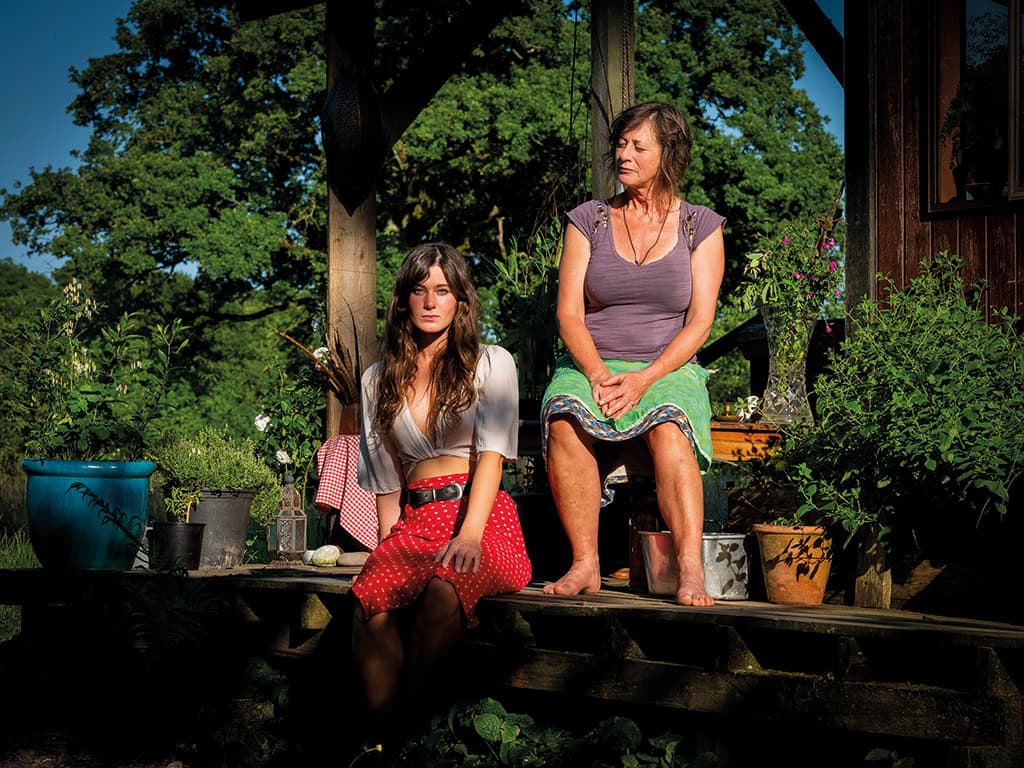
Brigite and Michelle
Being ably assisted by his nine-year-old son Florian, Harry took the picture, and sent it off for Tristan’s Instagram feed, as well as posting it on his own. ‘I got a really good response,’ he says. ‘I decided that the pictures I’d already seen of people, inside their properties, were a cliché that I wanted to steer away from – I wanted mine to have a bit of visual ambiguity or strangeness, rather than it being a boring and literal way of interpreting the lockdown.’
Once the seed of a project was planted, more followed soon after. ‘I decided I would shoot all the pictures with the noir-ish light that we were getting, about one hour before sundown. I shot them outside their place – nobody was really spending the entire time indoors, I thought that was rather a visual contrivance to shoot them like that.’
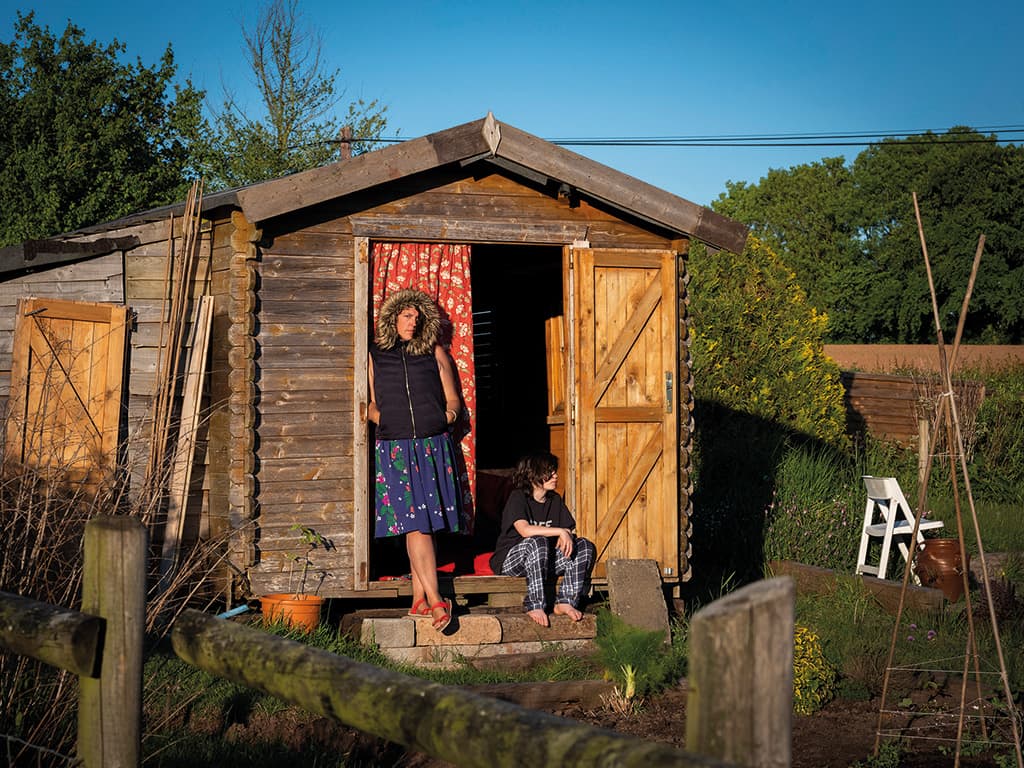
Abbie and Florian (Harry’s son)
All of the people in this set were in Harry’s immediate community, including the mother of his son, Abbie, who lives in the same village. She’s pictured with Florian, that day swapping his assistant role for a model one instead – there he looks a bit grumpy and reluctant. Then there’s Philip, Harry’s piano teacher, who is also an avid gardener. Other neighbours and friends occupy the rest of the frames.
‘I think as human beings we need to feel that our lives have meaning, it’s important to have a creative outlet,’ he tells us, reflecting on how the portraits felt so important at the time. Lots of photographers have undertaken projects during this time. Some projects are transient, and perhaps won’t ever be seen again. Others have already been published into books, as part of online projects and of course in magazines. Harry’s not sure what life these photos will have, if any.

Philip, Harry’s piano teacher
‘It was more the process of doing it, rather than thinking that I was going to do anything with the pictures. I am acutely aware that in 20 years’ time, when we look back, they will be slightly more interesting and enigmatic. In the moment, it was just for the intrinsic pleasure of doing it, rather than an attempt to do anything further.
I didn’t try and sell them to any magazines, because I knew they would be inundated with lockdown projects anyway. In a few years’ time, it might be interesting to go and interview them, say, or make a vignette film or something. A lot depends on what happens in the future, of course.’
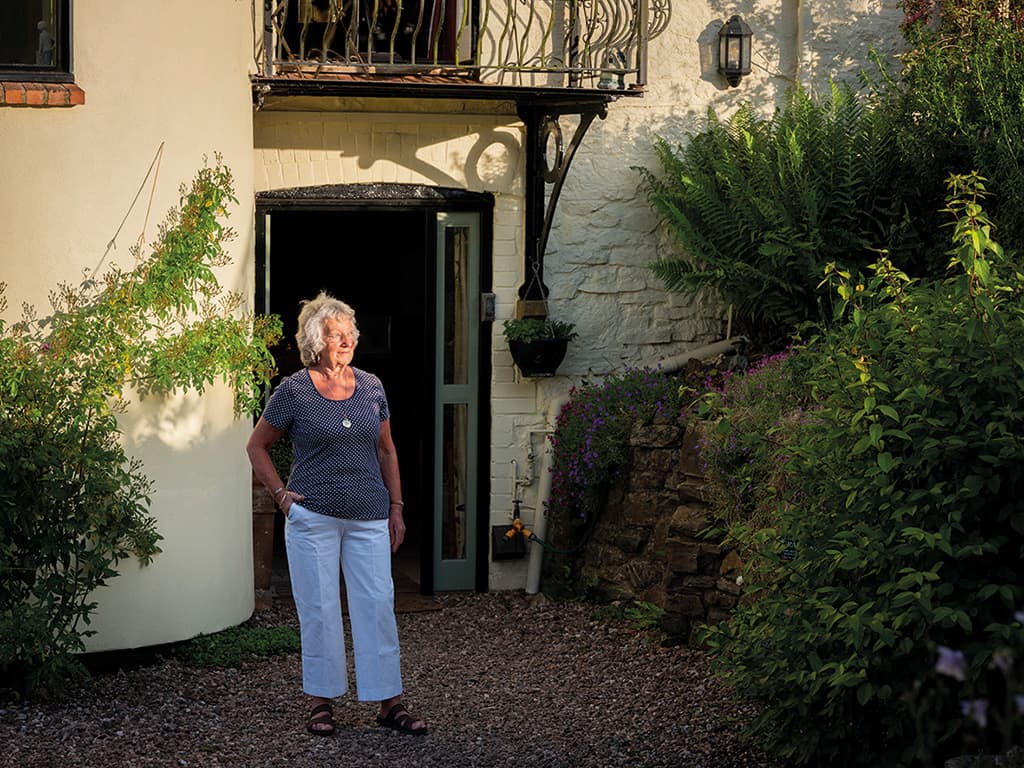
Mavis
The images were created using the medium-format digital Fujifilm GFX 50, along with a lens that Harry says he ‘recklessly’ bought, but doesn’t use too often – a 120mm macro, which gives a 35mm equivalent focal length of 75mm. This marks a departure from the standard, shorter lenses Harry uses for the vast majority of his portraits.
Both a stylistic choice and social distancing necessity, he says that it gives an interesting look to the pictures to shoot at this length, while he’s also pleased that an often very functional lens had a creative use for once. There wasn’t too much in the way of direction, which you can see in the final images which have a very natural, if slightly disturbed, feeling to them.

Robert
‘Everyone was a bit discombobulated, so it really tapped into that, but at the same time everyone had seen the first picture I’d shot so basically they arranged themselves. The only thing I did do was to get them to step into an area which had good light, so we had that beautiful, intense, end of evening light.’
Planning was fairly minimal too – ‘I’d just say, “I’ll give you a shout when the light’s good” and I’d hop in my car, turn up with a camera and tripod and do it.’ Benefits existed for the sitters as well as the photographer. ‘With the long hours of inactivity that the first lockdown resulted in, it was kind of a bit of a novelty really, plus I put them on Facebook and got nice comments.’
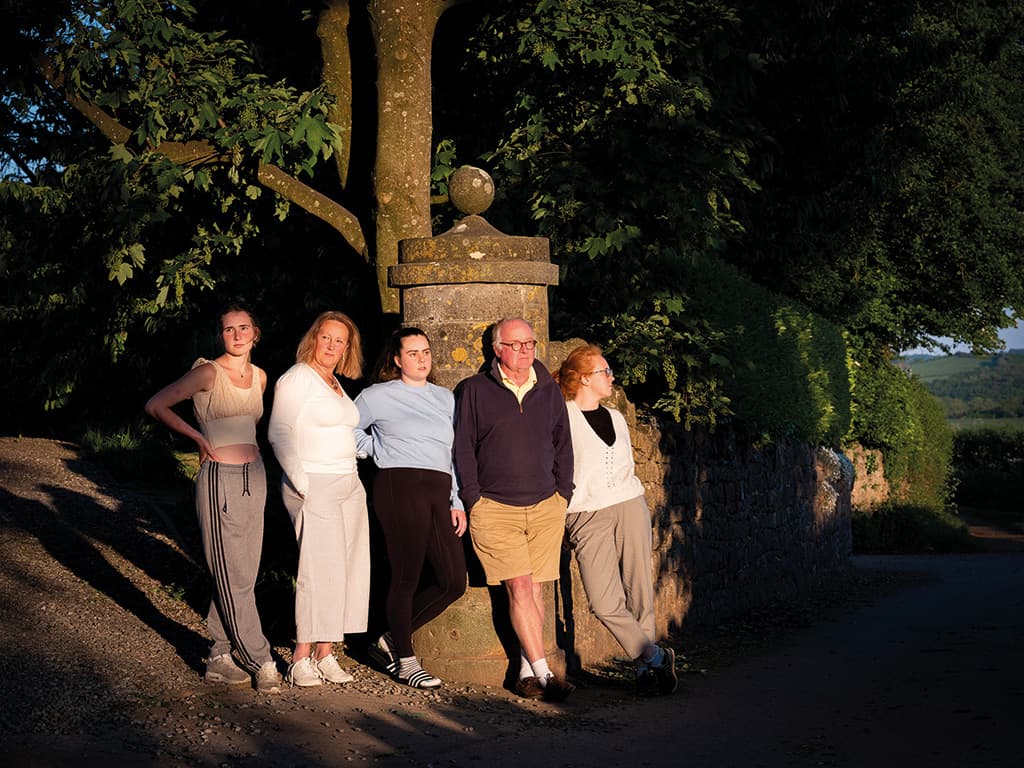
Kevin and family
So will Harry being doing further projects during the continuing lockdowns? ‘There’s a few people I didn’t get around to photographing, but it sort of feels like the moment’s passed now,’ he says. ‘I don’t know if I will bother doing anyone else, because this [first] lockdown felt different to the one now. I think it was a moment in time, and I think it’s a nice standalone capture of a time and a place.
‘I do think it’s a little unusual in that most of the other photographers who have done similar portrait projects were in urban environments. It’s quite interesting because although in some ways it’s a nicer place to be if you’ve got a big garden and stuff, in other ways, you’re a bit more isolated. The photographs hopefully show that – the telephoto lens shows that distance – like you’re observing them, but you’re not really engaged. There isn’t that much intimacy – it’s almost like a voyeuristic intimacy, rather than an intimacy where you’re engaged with the person.
‘Oscar Wilde said, a good portrait is more about the painter than the sitter. When you do any of these things, I think anything good, you’re not caring about what anyone else thinks, but it’s about your internal introspection and reflecting on your own life. I was probably a bit, disturbed, like everyone else.
I felt a bit like a cork that was being tossed around, not having any control over the situation. And in a way, doing that [first] picture of my neighbour, interacting with my community and getting out, it served a purpose. It made me feel connected and made me feel good doing something I do well and derive pleasure from…
Looking at these shots, it’s easy to be transported back to that moment in time. But, importantly, there’s also hope, determination and resolve, characteristics that will no doubt be required in abundance to take us through to 2021 and beyond.’
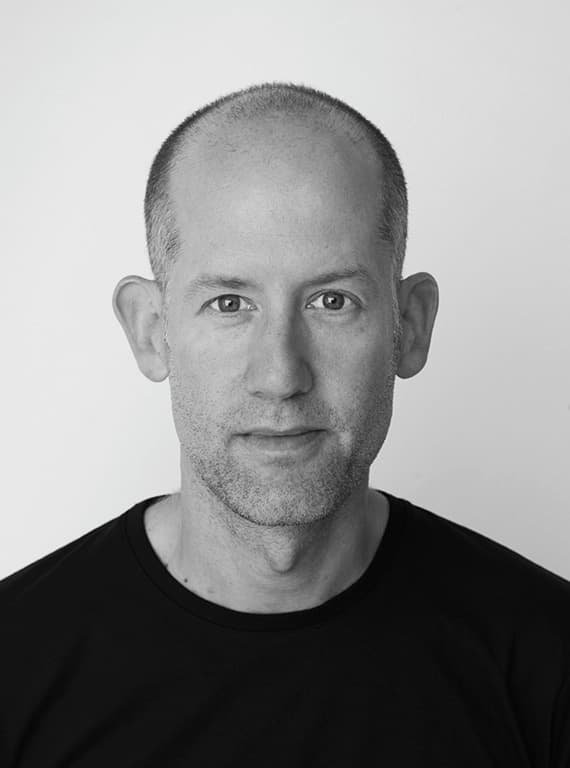
Harry Borden is a professional photographer, well known for his portraiture. He regularly appears in AP as part of the ‘When Harry Met’ series. His book, Single Dad, will be published by Hoxton Mini Press in the spring – some of the pictures from which were featured in AP 12 September 2020. Learn more about his work at his website.
Further reading
How to take really beautiful portraits
Use natural and artificial light for perfect portraits







